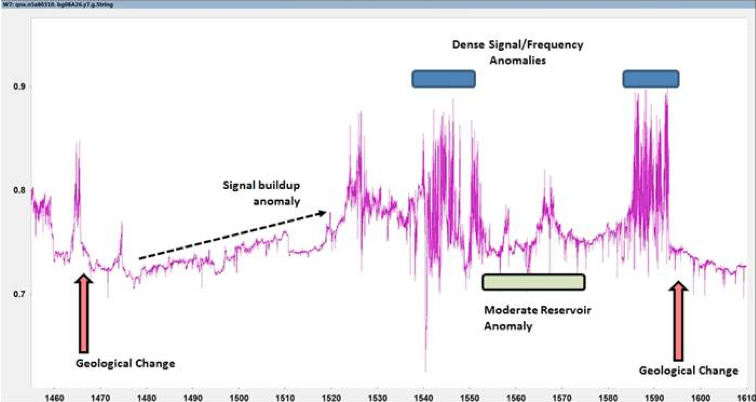The Science of SFD®
Hydrocarbon exploration utilizes many different geophysical methods to create models of the earth’s subsurface, with the goal of identifying areas which may be “anomalous” to permit the economic accumulations of oil and natural gas. This accumulation requires the combination of suitable structural or stratigraphic conditions with appropriate hydro-dynamic conditions. Mitigating geological exploration risks associated with factors such as trap configuration, reservoir quality and seal integrity is critical to overall exploration success.
Gravity based tools have long been used in the exploration process, and generally utilize mass-density or field-strength based measurements. The SFD® airborne survey technology also utilizes gravity as a medium, but in a unique manner through exploiting wave attributes of the acquired signal to rapidly identify and rank prospect leads for oil and gas exploration.
The earth’s gravitational field is influenced by many sources, and has a complex three-dimensional shape, resulting in part from the inherent anisotropy within the crust. The basic operating premise of SFD® is that it responds to subtle variations or perturbations in earth’s gravity field, and these can be indicative of anomalies which arise from subsurface changes relating to geologic features of interest, such as faults, fault blocks, anticlines, carbonate bank edges, channel systems, over-pressure of fluids, etc. This family of geologic features are commonly correlated with the potential for occurrence of hydrocarbon trapping conditions. In essence, changes in subsurface homogeneity are the fundamental factor of the physical contrast to which SFD® responds.
In general, porous rocks and the presence of fluid cause a decrease in bulk density, which will produce a gravity low. If more fluid is accumulated in a trap with high porosity, then the reservoir system becomes more homogenous provided there is adequate permeability distribution. This results in greater spatial subsurface homogeneity.
In SFD® exploration, a background condition is characterized by a random distribution of Δ ρ (change in density) with hydrostatic pressure gradients. An anomalous condition is characterized by an isolated homogeneous distribution of ρ due to enhanced porosity and fluid presence bounded by abnormal stress gradients. The anomalous condition is further characterized by a marked reduction in shear stress inside the reservoir and a reorientation of the horizontal principal stresses around it.
In addition to subsurface density changes, the principal stresses also play a significant role in the development of subsurface conditions associated with discontinuities. In general, fluid migration follows the direction of the maximum horizontal stress (SHmax) and fluid expulsion follows the direction of the minimum horizontal stress (Shmin). As fluid moves into reservoirs, SHmax will reduce and Shmin will increase as pore pressure increases. Also, shear stress will be further reduced as fluid accumulates in the reservoir. Reservoir rock permeability distribution is controlled by SHmax and a high value indicates an increase in homogeneity. Investigations of gravity gradients and stress changes have shown that there is a physical relationship between the two at small scale. The gravity field includes local-scale perturbations or distortions which arise from a combination of mass-density and field transmission effects.
To respond to small-scale changes in the gravitational acceleration (Δ g), the SFD® device is designed:
Based on extensive empirical observation and past correlations with other geological and geophysical data, SFD® data has proven highly effective in identifying potential hydrocarbon traps in a wide variety of geological settings, including thrust-fold belts, foreland basins, sub-salt plays, and extensional regimes. Interpretation of SFD® signals involves a pattern recognition process. Based on extensive experience, recognizable SFD® signal patterns (example below) have been empirically correlated to a variety of subsurface geologic fluid trapping conditions and are especially pronounced within regions of fluid-filled porosity bounded by abnormal stress gradients.

A sample SFD® signal from Ladyfern gas field
(Devonian carbonate reef structure), British Columbia, Canada.
This example clearly illustrates amplitude and frequency effects embedded in the SFD® signal.
The end result is that SFD® is capable of detecting subsurface conditions which are favorable for fluid entrapment, using a unique detection system. SFD® yields an independent dataset that is highly complementary to other geophysical methods such as 2D and 3D seismic surveys. In conjunction with other geological data, SFD® can be a fundamental step in assessing whether lead areas are then elevated to prospects, aiding in the goal of focusing exploration efforts and reducing overall risk.



